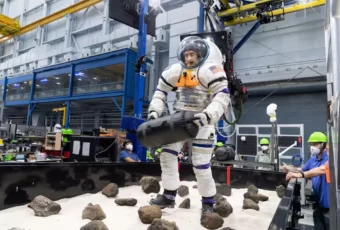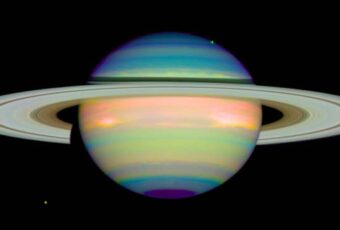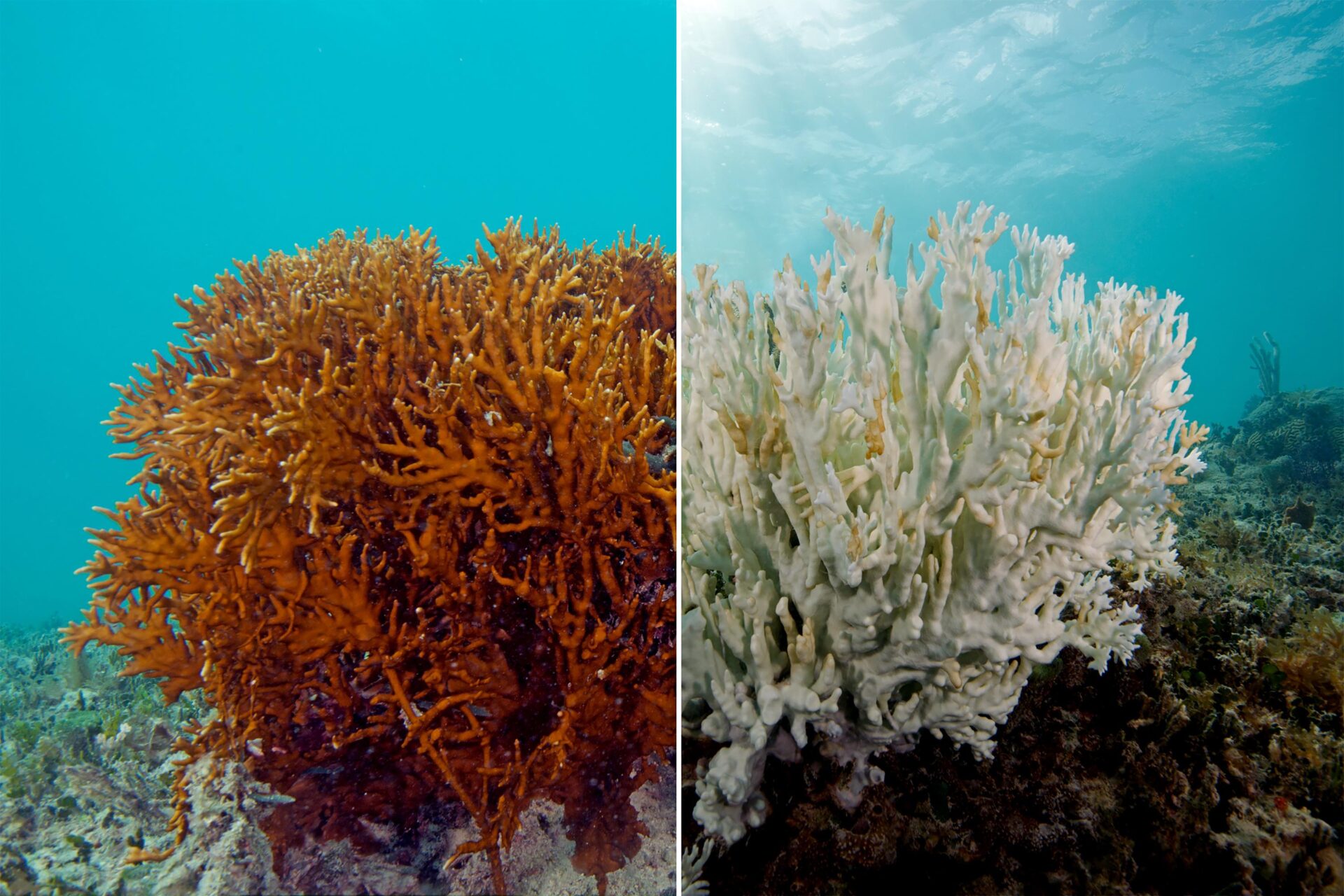
What Is Coral Bleaching?
Coral bleaching happens when the tiny organisms that make up the coral reefs’ structure, called coral polyps, get rid of the symbiotic algae (called zooxanthellae) that live in their tissues. Usually, these algae provide essential nutrients for the coral reefs in the process of photosynthesis, so it is vitally important for these algae to be there in order to keep the coral alive, which is manifested through vibrant color. When these algae can’t survive or are forcibly expelled, the corals begin to lose their color, resulting in their bleached look, and they become more sensitive to stress and diseases.
The main driving factor that causes coral bleaching is environmental stress, namely the increasing temperatures of the sea. When temperatures become too warm for the coral, they begin to expel the algae, and they lose their color. There are other factors that can cause this, including pollution, disease, extreme weather, the acidification of the ocean, as well as diseases.
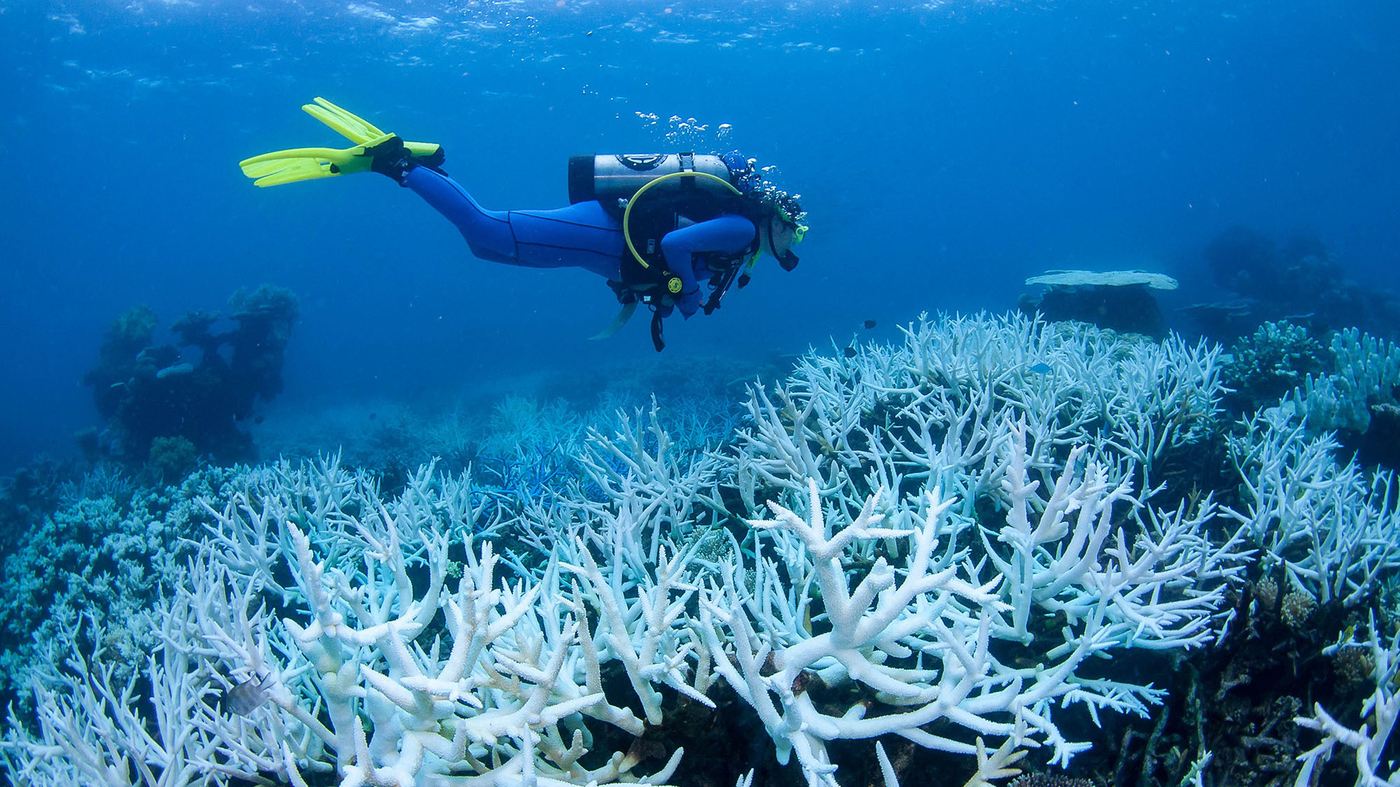
White Field Of Bleaching Coral On Great Barrier Reef, Climate Change
The biggest factor that is impacting coral bleaching around the world is the rising temperature of the oceans happening due to the overall warming temperatures of the world. Increased global temperatures are caused by many outside factors, including greenhouse gas emissions, causing an increased amount of coral bleaching throughout the world’s coral reef environments.
What is most concerning is the fact that coral reefs are critically important for much of the existing marine life in the ocean. If coral reefs die out, it leads to a domino effect, causing the whole ecosystem to fall apart. Since coral reefs provide vital shelter to many other marine organisms, the downstream effects of dying coral reefs is absolutely devastating.
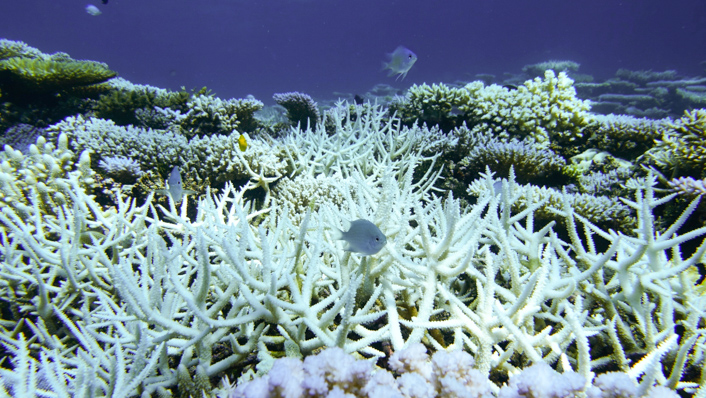
Why Is It Such An Issue?
Another huge concern is that this phenomenon is not a short term issue, because even if a coral survives bleaching, it will continue to be stressed, and therefore more vulnerable to issues down the road. Frequent bleaching will continue to weaken the coral, and eventually it will stop recovering, and cause the death of the entire reef system, which causes irreversible and devastating damage to a wider set of ecosystems.
There are ways to help prevent coral bleaching. This includes dramatically reducing carbon emissions, practicing sustainable fishing practices, and improving marine protected environments. Many researchers are developing coral restoration practices, which include selective breeding and coral farming, which can help regrow damaged reefs. However, it is vital that global public awareness continues to grow and collaborations to improve the situation take place in order to help avoid horrific devastation.



